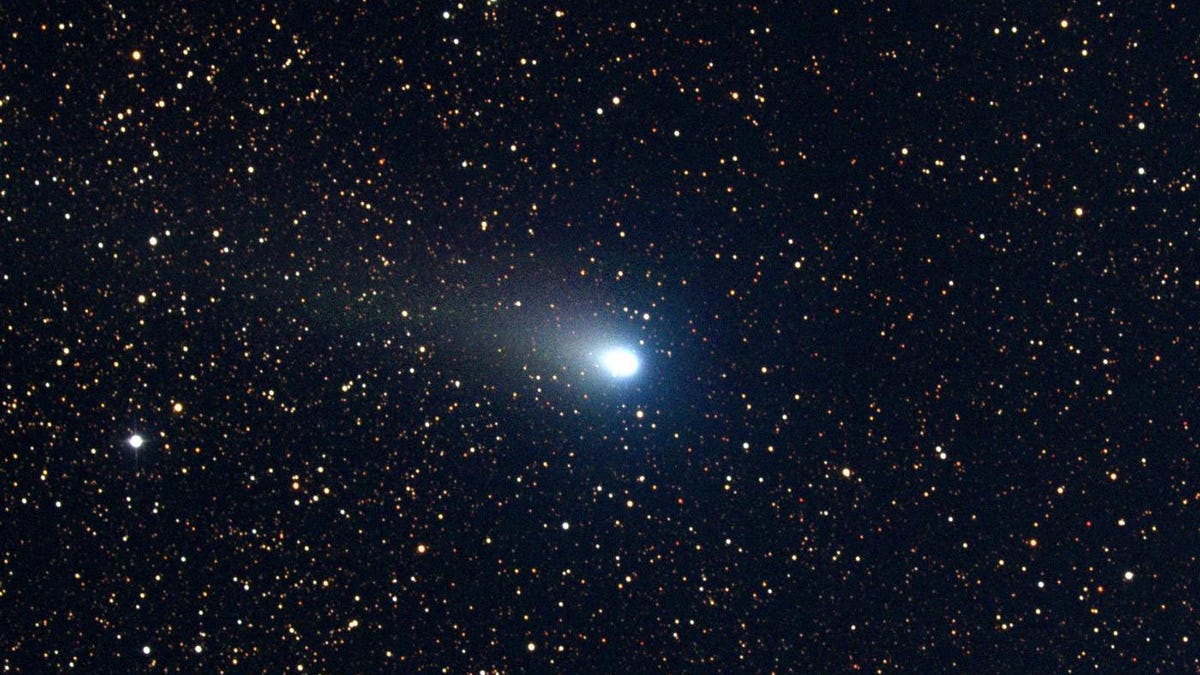Draconid meteor shower peaks tonight: How to watch the stunning show
These shooting stars sometimes light up the sky like the dragon's breath they're named for.

Comet 21P is the source of the Draconids.
Friday night offers a chance to practice meteor spotting, and with some luck, even get caught in a rare but dazzling meteor storm, courtesy of the annual Draconid meteor shower.
The final months of the year offer a nice string of meteor showers and a good excuse to get outside at night when temperatures tend to be mild in most places. Up next are the Draconids, a precocious and coy little group of space rocks, dust and debris that move relatively slowly and often light up earlier in the evening than most meteor showers.
This shower tends to reward patient and dedicated skywatchers. Unlike major showers such as the Orionids, which will also peak later this month, the Draconids are considered a "variable" shower. That's basically astronomers' (and journalists') way of saying the Draconids are unpredictable and please don't blame us if 2021 is a bad year and you only see a few or none at all.
But the flip side of variable meteor showers is that sometimes you get lucky and experience a major outburst of activity or even a meteor storm with hundreds of visible shooting stars and fireballs per hour. Many observers in Europe were treated to a Draconid outburst in 2018 and also in 2011. In 1933 and 1946 the Draconids flared up, with thousands of meteors seen per hour, producing some of the most spectacular meteor storms of the entire 20th century.
The Draconids (also sometimes called the Giacobinids after the Comet 21P/Giacobini-Zinner that the meteors originate from) are so named because they will appear to radiate outward from the direction of the constellation Draco the Dragon in the night sky.
The night to go looking for these bits of fiery dragon's breath is Friday, Oct. 8, when the shower peaks. Plan to head outside just as it's getting fully dark in the evening, preferably at a location with no light pollution, clear skies and a wide open view of the cosmos. Give your eyes 15 to 20 minutes to adjust, bring whatever you need to be comfortable and set aside at least an hour to enjoy the experience and have a decent chance of seeing something. You can orient yourself toward Draco if you can find it, but it's more important to be patient and just observe as wide a swath of sky as you can.
You can expect to see up to five Draconids if it's an average night. A big outburst isn't expected this year, but these things are hard to predict and it's always possible we'll get lucky. One note: the Draconids are tougher to observe from the Southern Hemisphere, so adjust your expectations accordingly.
If any astrophotographers manage to get great shots of a Draconid fireball, please tag me on Twitter @EricCMack.

